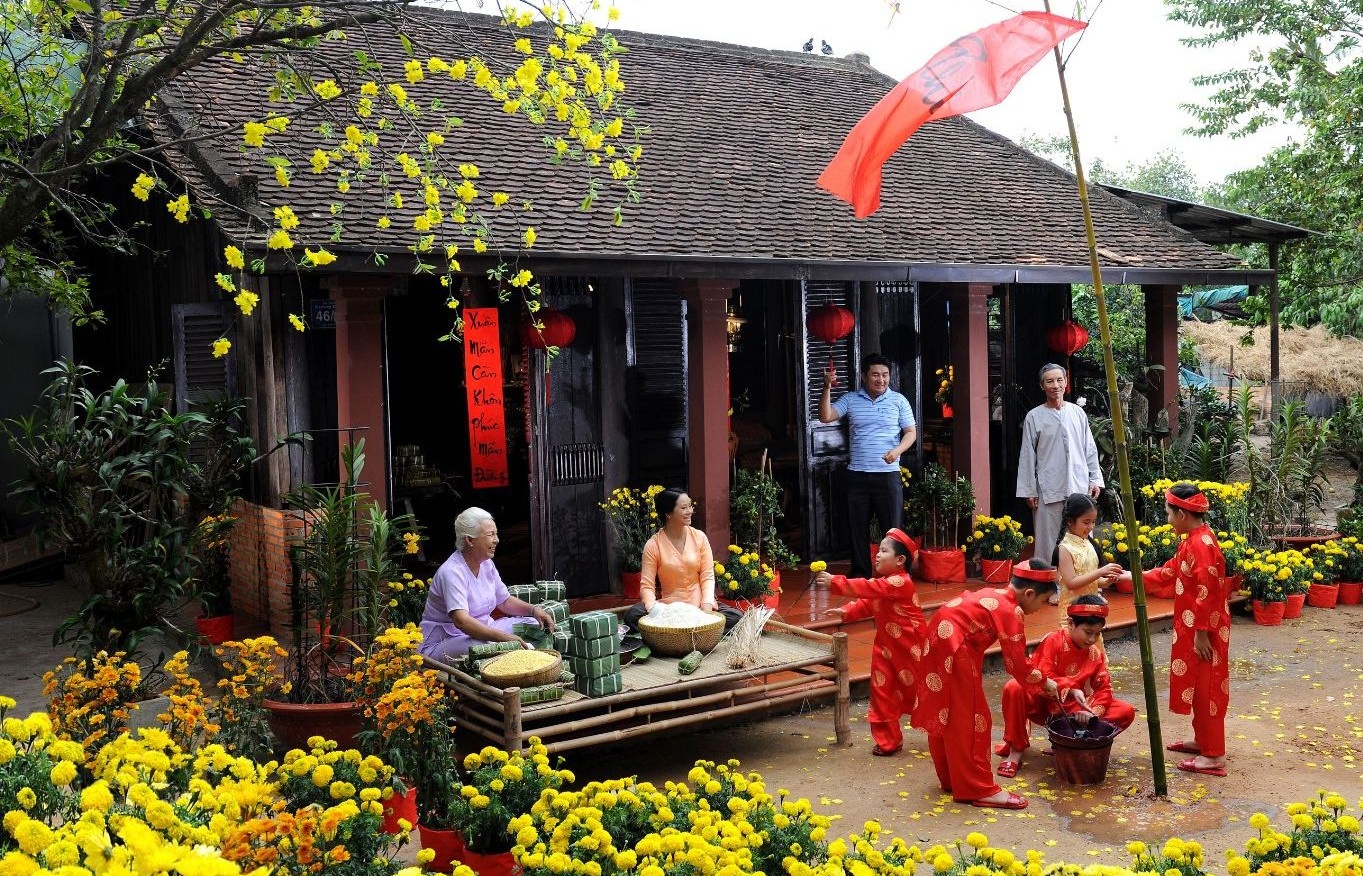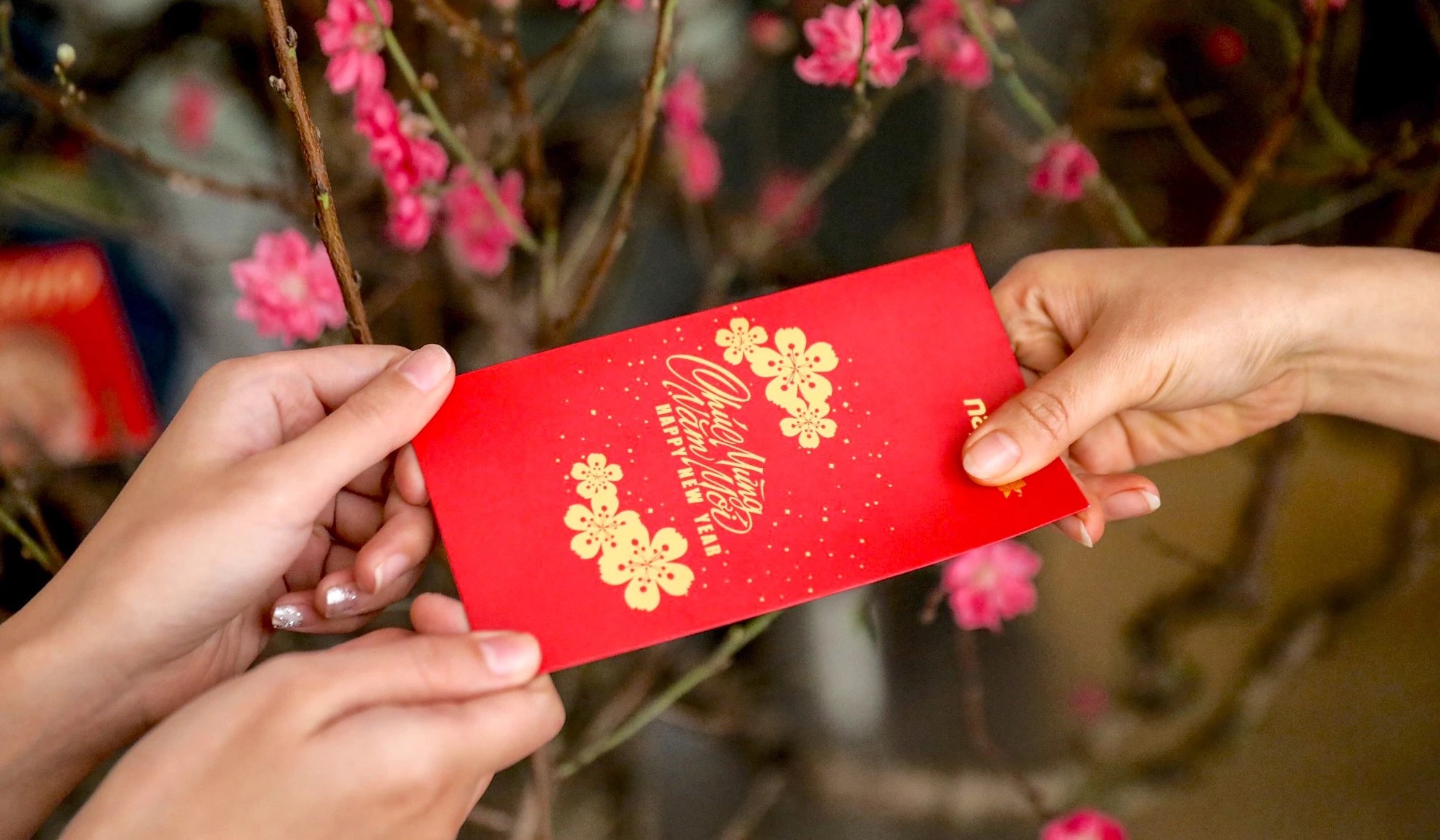
Lucky money – The heart of Tet in Vietnam
Li Xi, or lucky money, is more than just a monetary gift during Tet; it’s a cherished tradition that embodies the spirit of the Vietnamese Lunar New Year. This symbolic exchange of lucky money within red envelopes carries deep cultural significance, conveying blessings, fostering family bonds, and ushering in good fortune for the year ahead.

Lunar new year in Vietnam
The Vietnamese Lunar New Year, also known as Tet, will fall on Wednesday, January 29, 2025.
Tet is the most important and significant holiday in Vietnam, marking the beginning of a new year according to the lunar calendar. Tet is a time of joy, renewal, and togetherness for the Vietnamese people. It’s a celebration that blends ancient traditions with modern practices, offering a glimpse into the rich cultural tapestry of Vietnam.
Lunar New Year (Tet) in Vietnam: A Celebration of Family, Ancestors, and New Beginnings
Tet, the Vietnamese Lunar New Year, is the most significant and cherished holiday in Vietnam. It’s a time for family reunions, honoring ancestors, and embracing new beginnings.
Meaning and Origins:
- Celebrating Spring: Tet marks the arrival of spring, a time of renewal and growth in nature. It symbolizes the cycle of life, with the hope for a prosperous and bountiful year ahead.
- Ancient Roots: The origins of Tet can be traced back to ancient Vietnamese agricultural traditions. It was a time to celebrate the harvest, honor the gods and spirits, and prepare for the upcoming planting season.
- Chinese Influence: The Vietnamese Lunar New Year shares many similarities with Chinese New Year, reflecting the historical and cultural influence of China on Vietnam.
Key Aspects of Tet:
- Family Reunions: Tet is a time for families to come together, regardless of distance. People travel from all over the country to return to their ancestral homes and spend time with loved ones.
- Ancestral Worship: Honoring ancestors is a crucial part of Tet celebrations. Families prepare elaborate offerings of food, flowers, and incense to pay respects to their deceased relatives.
- Decorations: Homes are meticulously cleaned and decorated with flowers, peach blossoms, kumquat trees, and red lanterns to symbolize good luck and prosperity.
- Traditional Foods: Special dishes are prepared, such as “banh chung” (sticky rice cake), “thit kho tau” (braised pork belly), and “xoi” (sticky rice), which are believed to bring good fortune.
- Giving Lucky Money (Li Xi): Elders give lucky money (li xi) in red envelopes to children and unmarried adults as a blessing for the new year.
- Visiting Relatives and Friends: People visit relatives and friends to exchange New Year’s greetings, offer best wishes, and enjoy festive meals together.
Cultural Significance:
Tet is more than just a holiday; it’s a deeply ingrained cultural tradition that reflects Vietnamese values, beliefs, and social structures. It reinforces the importance of family, respect for elders, and the hope for a prosperous future.
See also:
Lucky money – the symbol of luck during Lunar new year

Li Xi, or lucky money, is an integral part of Tet celebrations in Vietnam. More than just a monetary gift, it carries deep cultural significance, symbolizing good fortune, blessings, and the enduring strength of family bonds.
Why is Lucky money Given During Tet?
- Wishing for Prosperity: The red envelope itself symbolizes good fortune and prosperity. The money within is believed to bring good luck, ward off evil spirits, and ensure a prosperous year ahead for the recipient.
- Strengthening Family Ties: Lucky money strengthens the bonds between family members. Elders giving Lucky money to younger members express their love, care, and hopes for their future success and happiness.
- Cultural Heritage: The tradition of giving Lucky money has deep roots in Vietnamese culture, passed down through generations, reinforcing the importance of family values and social harmony.
What is Lucky money?
- Red Envelopes: Lucky money is always presented in a red envelope, symbolizing good luck and prosperity.
- Monetary Gift: The amount of money varies depending on the relationship between the giver and receiver, and the giver’s financial means.
- Symbolic Numbers: Numbers like 20,000, 50,000, 100,000, or even larger amounts ending in double zeros (e.g., 200,000, 500,000) are often favored, as they are considered lucky.
How is Lucky money Given?
- Elders to Younger: Traditionally, elders (parents, grandparents, godparents) give Lucky money to children, unmarried adults, and younger members of the family.
- With Blessings: The act of giving Lucky money is often accompanied by blessings for good health, success, and happiness in the new year.
- Respectful Acceptance: Recipients receive Lucky money with respect and gratitude, expressing their thanks to the giver.
When is Lucky money Given?
- During Tet: Lucky money is typically given during the first few days of the Lunar New Year, often during family gatherings and visits.
- Early Morning: Traditionally, children wake up early on New Year’s Day to wish their elders a happy new year and receive Lucky money.
Some ideas for decorating red envelope for lucky money

Lucky money is more than just a monetary gift; it’s a cherished tradition that adds a special touch to Tet celebrations. It fosters a sense of joy, excitement, and togetherness among family and friends, reminding everyone of the importance of family bonds, good fortune, and the hope for a prosperous year ahead.
1. Traditional Motifs:
- Gold Embossing: Use gold foil or embossing techniques to create elegant designs of lucky symbols like dragons, phoenixes, or the Chinese character for “luck” (福).
- Red and Gold: Combine red and gold, colors traditionally associated with luck and prosperity.
- Floral Patterns: Incorporate delicate floral motifs like plum blossoms, peach blossoms, or chrysanthemums, symbolizing spring and renewal.
2. Modern Touches:
- Minimalist Designs: Use simple geometric shapes, clean lines, and modern typography for a contemporary look.
- Watercolor Effects: Create watercolor washes in shades of red, pink, and gold for a delicate and artistic touch.
- Personalized Messages: Add handwritten messages of good wishes or the recipient’s name for a personal touch.
3. DIY Crafts:
- Origami Envelopes: Fold your own envelopes from colorful paper and decorate them with glitter, stickers, or ribbons.
- Paper Quilling: Use paper quilling techniques to create intricate designs and patterns on the envelopes.
- Fabric Envelopes: Create unique envelopes using fabric scraps, embroidery, or other textile techniques.
Tips:
- Use high-quality materials: Choose sturdy red paper or fabric for your envelopes.
- Keep it simple and elegant: Avoid overly cluttered designs that might detract from the overall aesthetic.
- Present with care: Present the decorated envelopes with care and respect to show your thoughtfulness.
By incorporating these ideas, you can create unique and meaningful Li Xi envelopes that will be cherished by the recipients.
